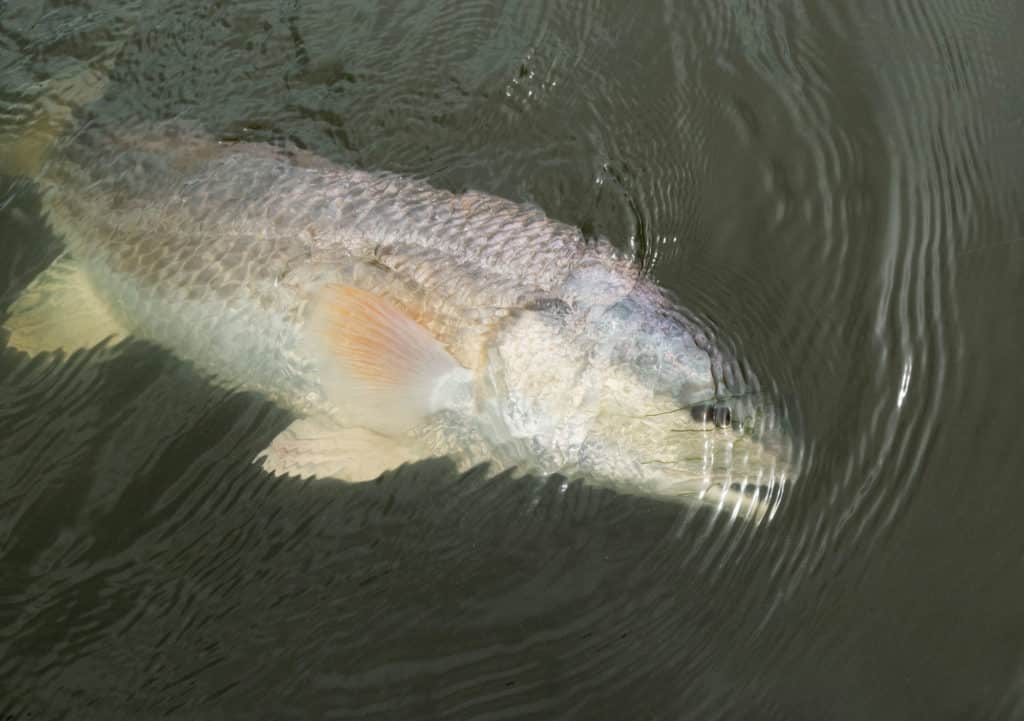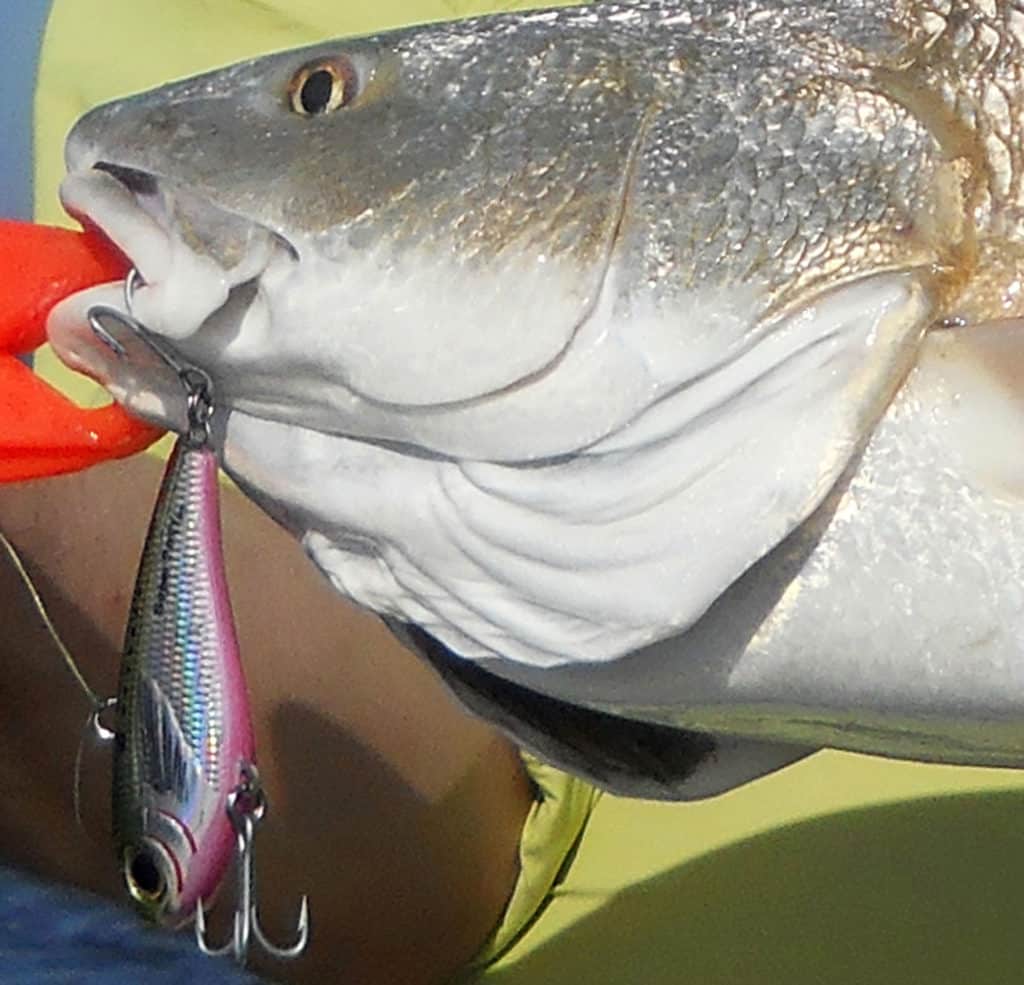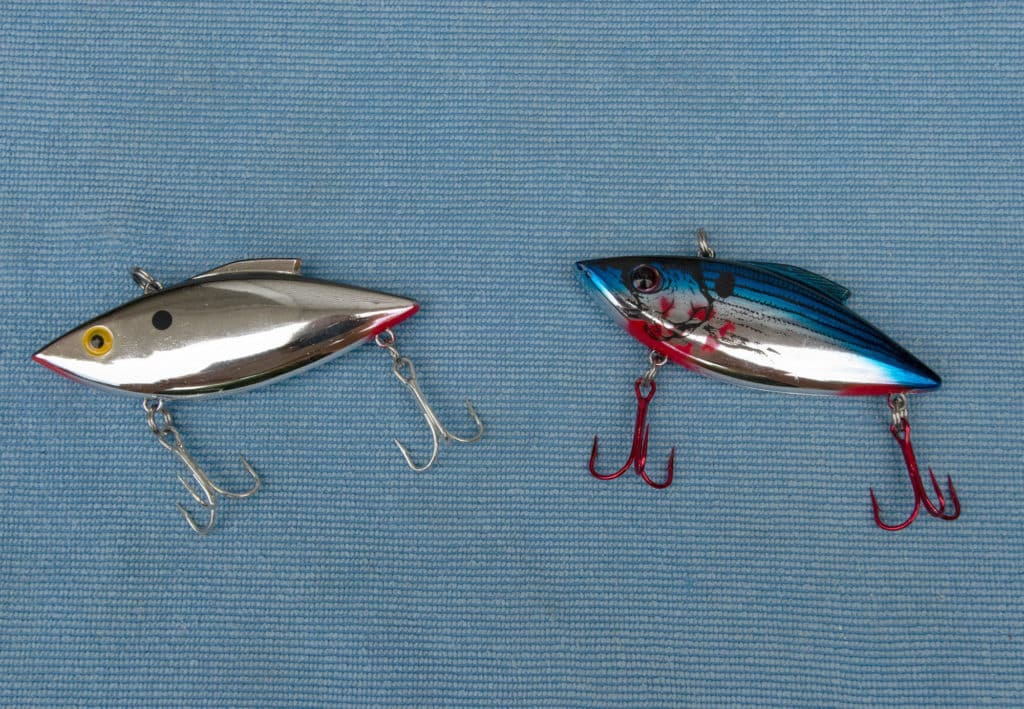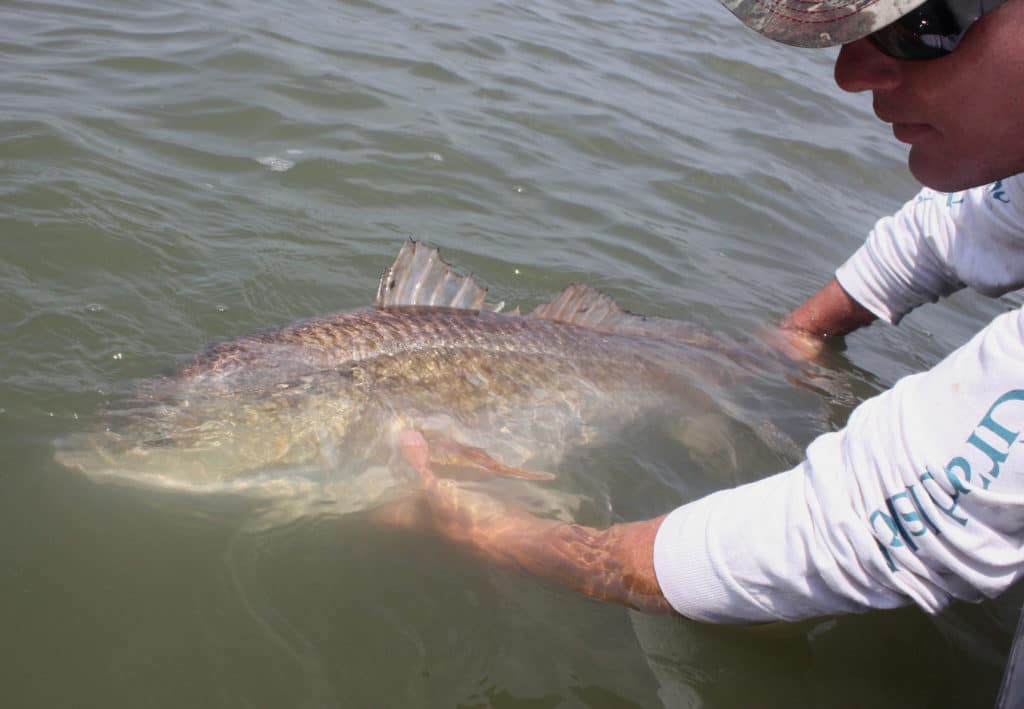
I eyed a spot at the southwestern tip of the Cameron, La., jetties and made a cast. My lipless crankbait hit the water.
As the lure sank, I began my normal seven-count before making the first pull. I stopped at 3. It felt as if the lure had hit a rock and got stuck, so I set the hook — just in case.
The rod immediately doubled over, the drag screamed, and for the next 15 minutes, a super-size redfish put my muscles and tackle to the test.
Catching redfish is fun. Catching big redfish is really fun. And one of the best ways to do that in late summer and early fall is with crankbaits at jetties.
Gearing Up
Endless varieties of crankbaits flood the market, especially for bass fishing. But the most effective crankbaits for redfish are lipless.
As the name implies, these lures feature no protruding lip, a characteristic that allows this kind of bait to fish at specific depths. Lipless versions can be more versatile because the angler essentially controls the fishing depth.

Rat-L-Trap has long led the industry, but my favorite is the Super Pogy by Bomber Saltwater Grade. It comes with a high-pitch rattle that I’ve found effective. Other options include the Nobondo Lipless Crankbait, Nomad Design Madscad and Biospawn Battle Bot.
Best colors include chrome, white/black, chrome/pink, and bronze. I use a casting reel rigged with a 30-pound green P-line braid tied directly to the lure because I fish in dingy water. In clear water, add a 36-inch fluorocarbon leader if needed.
I like a medium-heavy action, 7 1/2-foot rod but have a particular preference for its composition. I learned about this while fishing over the years with four-time Bassmaster Classic champion and living legend Rick Clunn.
Super-sensitive rods actually work against you when fishing with crankbaits, Clunn told me. A fish actually pushes the lure in pursuit; if you’re fishing a super-sensitive (graphite/composite) rod, you’ll set the hook before the fish actually has the lure.
Clunn collaborated with Wright & McGill a few years back to create the S-Glass Series of rods that incorporate traditional fiberglass technology with a modern flare. I use these rods for my crankbait action and have had serious success everywhere from the Mississippi River near Venice, La., to the Cameron jetties.
With glass rods, I have had far more hookups than misses because I can’t feel the bite until the fish takes the lure. You’ll find numerous fiberglass crankbait rods on the market now, and they can make a massive difference in the pursuit of redfish.

Location and Technique
Around the jetties, start fishing near the boat cuts [Ed’s note: Texas jetties feature breaks in the rock wall about halfway out that allow small boats through] to take advantage of reds foraging on baitfish moving between the channel and Gulf side of the jetty rocks. “You get shrimp, shad, and crabs pushing through, and the reds will move in and feed,” says veteran jetty angler Bill Killian.
Anchor up-current of the cut and work the lure against the flow. “Throw it out toward the cut, let it sink a few seconds, and then reel it in as fast as you can. The pressure of the current will allow the rattles to work really well,” he says.
Also look for jetty reds in the deep holes usually found around the southern tip of the rocks and northward about 50 yards. At these spots, the current wraps around the jetty structure and carves out large holes. Reds congregate around large boulders that have fallen off the main wall into these holes.
Read Next: More Redfish Fishing Tips
Throw out the crankbait, let it sink to the level of the rocks, and rip it. I pull a few feet and then reel a couple of cranks. Repeat that three or four times and recast. The reds usually hit just after the first pull and sometimes on the fall.
While it might sound counterintuitive, if you see dolphins feeding in the area, that’s a fortunate sign.
In my logbook, I’ve noted dolphins feeding in the vicinity every time I’ve caught lots of bull reds. The times we had fewer fish, I saw no dolphins feeding. The presence of dolphins often indicates menhaden, a primary forage species for big reds.

Releasing for the Future
As everything from algae blooms to bycatch in the menhaden fishery puts pressure on redfish populations, catch-and-release becomes increasingly important — particularly for the big, breeding-size reds that inhabit jetty systems.
Scientists say the discard mortality rate for all sizes of redfish averages around 8 percent, though the type of terminal tackle used plays a major role. In general, lures deep-hook fewer fish than J-hooked natural baits.
In fact, one fish Killian caught at a nearshore gas platform off the Sabine Pass, which I tagged for Texas Sea Grant, made a reappearance three weeks later two miles away at the Sabine jetties. As the super fat bull redfish surfaced, Killian netted it. We quickly noticed a tag covered with slime.
I removed the growth, and my heart raced as I realized the tag said Sea Grant.
After examining our data, we realized it was the same fish Killian caught a few weeks before. It taught me firsthand that releasing big fish pays off, and I will carry that and deep respect for these bulls with me for the rest of my life.








